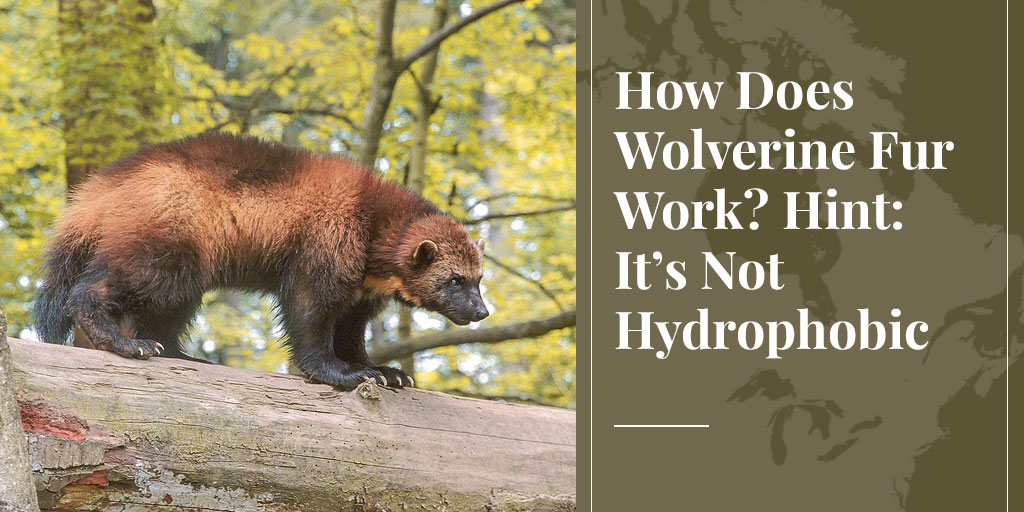
Conventional wisdom is clear on why, since time immemorial, wolverine fur has been the preferred material for hood trim in the High North. In essence, the thick, dark, oily fur is hydrophobic, which means it repels water, and thus prevents the build-up of frost caused by condensation of the wearer’s breath. The only problem is, none of this is true.
While everyone agrees that wolverine fur makes the finest lining for parka hoods in sub-zero conditions, experts still don’t have a clear understanding why. But they do know that it’s not hydrophobic, it doesn’t repel water, and, given the chance, it allows frost to build up just like any other fur.
Before we dispel the myths surrounding wolverine fur, here’s some background. Wolverine fur is generally considered too long and the leather too heavy for use as whole coats. Instead, it is revered as trim for hoods by the Indigenous people of the Arctic and sub-Arctic, in preference to the more readily available (and therefore cheaper) wolf and coyote. But it’s not entirely about functionality. Sometimes a strip of wolverine fur is placed next to the wearer’s face, then surrounded with the long, silvery mane of a wolf, creating the famed “sunburst” ruff. The effectiveness of these ruffs in keeping the wearer warm has been scientifically proven, but they can also be spectacularly beautiful, so they’re also worn for show!
SEE ALSO: Why fur trim keeps us warm. Truth About Fur.
What Is Hydrophobicity?
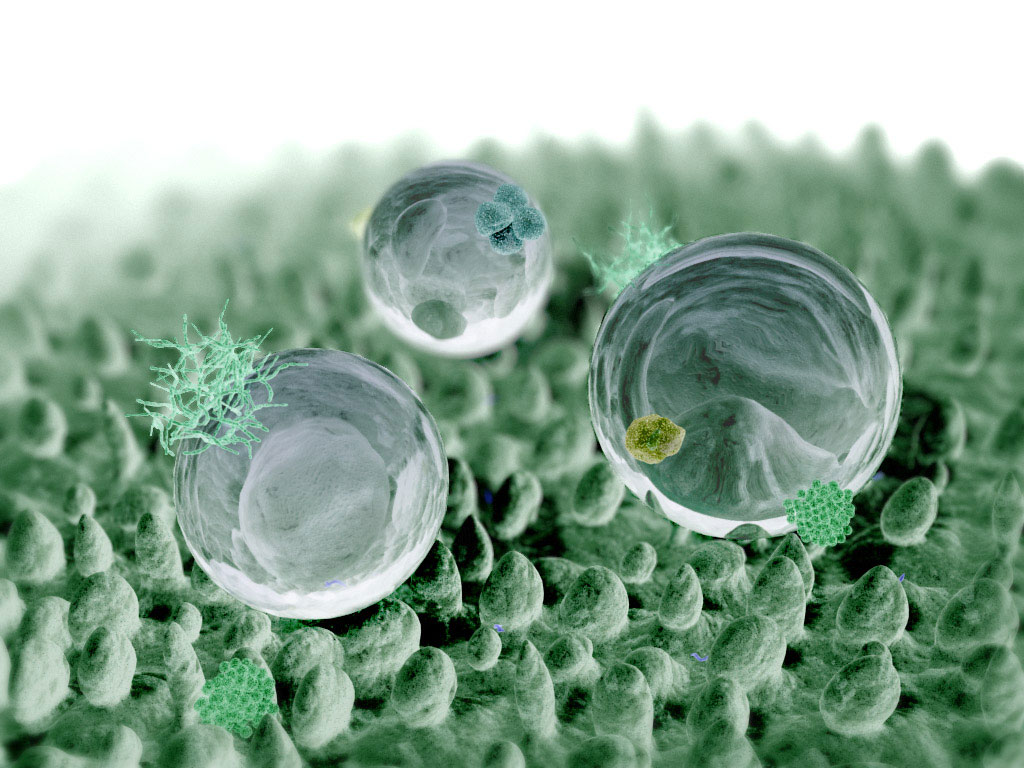
So where do the myths about wolverine fur originate? Let’s start with that confusing word “hydrophobic”. It probably doesn’t mean quite what you think it does, or even what your dictionary says.
When we talk of phobias (from the Greek phóbos, meaning “aversion”, “fear” or “morbid fear”), we think of being repulsed by something. Hence the word “hydrophobia” was historically used as a synonym for rabies because sufferers often fear water (and liquids in general). From this, scientists came to use the word “hydrophobicity” to describe the behaviour of certain surfaces in the presence of liquids. Then, for whatever reason (laziness, misunderstanding, or lack of a better word?), dictionaries decided to use “repel” in their definitions. The Free Dictionary, for example, defines hydrophobicity as “the property of repelling water rather than absorbing it or dissolving in it.”
Strictly speaking though, hydrophobic surfaces don’t repel water at all. Two magnets of the same polarity, for example, repel each other, but hydrophobic surfaces don’t repel water; they simply don’t attract it. So even if wolverine fur were hydrophobic (which, as we’ll see, it isn’t), it would be wrong to say it repels water.
Many examples of hydrophobic surfaces exist in nature, all highly unattractive to water but not repelling it per se. Perhaps the best-known is the leaf of the lotus flower, after which the “lotus effect” is named. These leaves, and those of other plants like nasturtiums and prickly pears, use hydrophobicity to keep clean. Rain drops gather dirt while the surface architecture minimizes their adhesion to the surface itself. The same phenomenon is seen in the wings of insects like butterflies and dragonflies. Meanwhile, insects that live on water, like water striders, or spend most of their lives under it, achieve hydrophobicity through tiny hairs that make them virtually unwettable. Then there are penguins. One reason penguins excel at swimming is a layer of trapped air that coats them. Aside from providing insulation, this air reduces drag when swimming, and they can release it to accelerate when jumping out of water to land.
“Frost-Shedding”
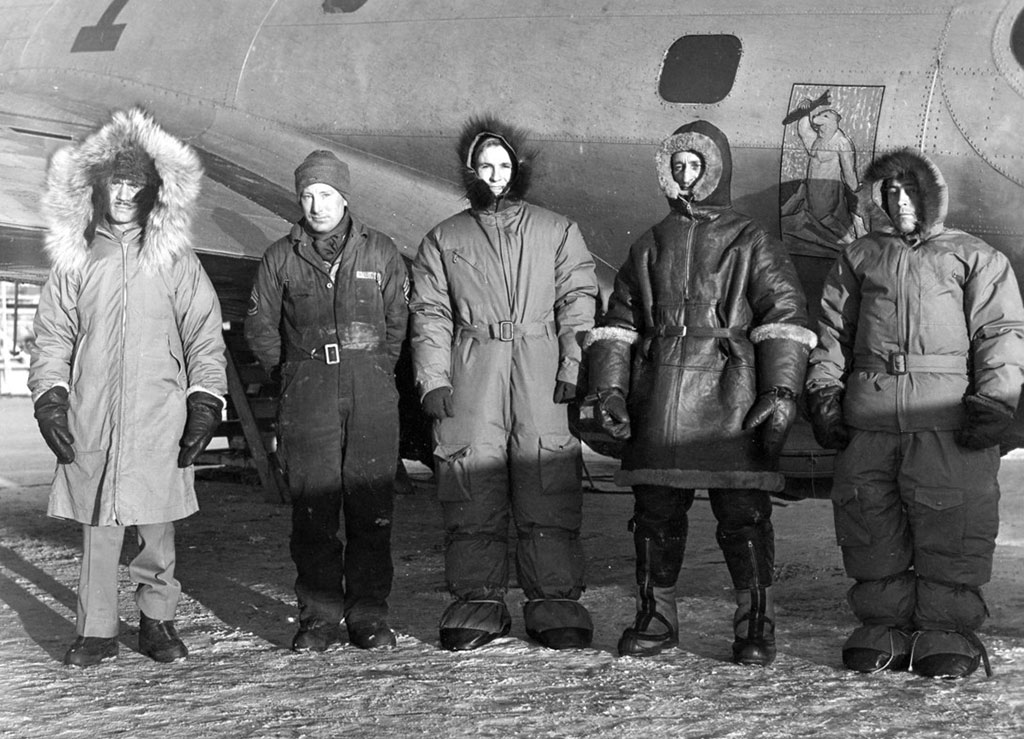
So how about the claim that wolverine fur prevents the formation of frost or ice from the wearer’s breath? Again, it’s a convenient explanation, but not actually true.
Research on the efficacy of fur trim was ramped up during World War II, when thousands of military garments made use of it, notably wolf and coyote. Writing in 1952 for the Journal of Mammalogy, Rollin H. Baker found wolverine out-performed both these furs, but not because frost didn’t form on it. On the contrary, it did. It was what the wearer did next that mattered.
On the performance of wolf and coyote, he wrote: “As long as the fur trim can be kept dry, it functions quite well. However, once rime or frost has accumulated on wolf and coyote fur trim it cannot be brushed or shaken off. Therefore, in order to remove the rime, the garment must be warmed to the point where the rime either sublimates or passes through a liquid stage before it is evaporated. When air temperatures are low enough to cause direct freezing of the breath on the fur trim of garments, thawing caused by warm air currents from the body wets the fur. It thus becomes very uncomfortable to the wearer and also loses its ventilating quality.”
All of which sounds thoroughly miserable, particularly if that thawed frost turns into the last thing you want on your hood trim: clumps of ice – icicles even – drawing heat away, disrupting air flow, and dragging your hood down with the sheer weight. (For an idea of how bad things can get, just Google “ice beard”.)
So how did wolverine fur compare?
“Here is the point of difference between wolverine fur and most other furs,” wrote Baker. “Frost or rime actually will form on wolverine fur at sub-zero temperatures, but it can be readily brushed off with a simple flick of the mitten and thus the fur can be kept dry. If the rime is not brushed off, the fur will become wet and uncomfortable, just as other furs do.”
In other words, the myth that wolverine fur prevents the build-up of frost is wrong. Frost forms on wolverine fur just like on any other fur. What sets it apart is what Baker called its “frost-shedding quality” – the ease with which it can be brushed off.
So Is It Hydrophobic?
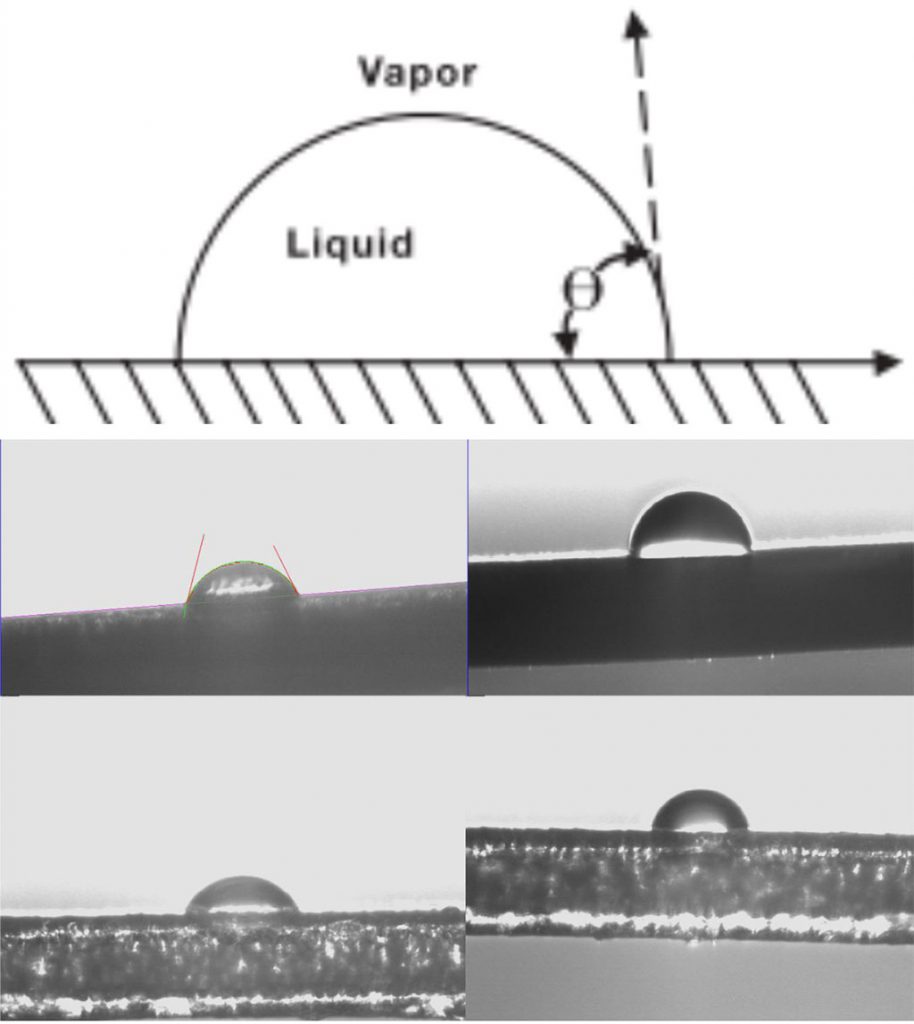
In case you think all this talk of repulsion versus non-attraction, and frost-prevention versus frost-shedding, is splitting hairs, let’s now address the elephant in the room. Is wolverine fur hydrophobic or not?
Scientists are extremely interested in hydrophobicity for a whole range of possible applications in things like aircraft, road and power-line maintenance, building construction, energy efficiency in cooling devices, car windshields, and protection of crops. So in 2012 Boris Pavlin, then at Carinthia University of Applied Sciences in Austria, subjected wolverine fur to a whole gamut of tests to see why it’s so effective at “frost formation suppression”.
Pavlin’s test for hydrophobicity was simply to photograph the contact angle between droplets of water at various locations on a wolverine hair (see photos above). Clearly, there is no comparison between these images and the lotus leaf we saw earlier, and Pavlin’s conclusion was unequivocal: “the surface was NOT hydrophobic” (emphasis not added).
Then How Does Wolverine Fur Work?
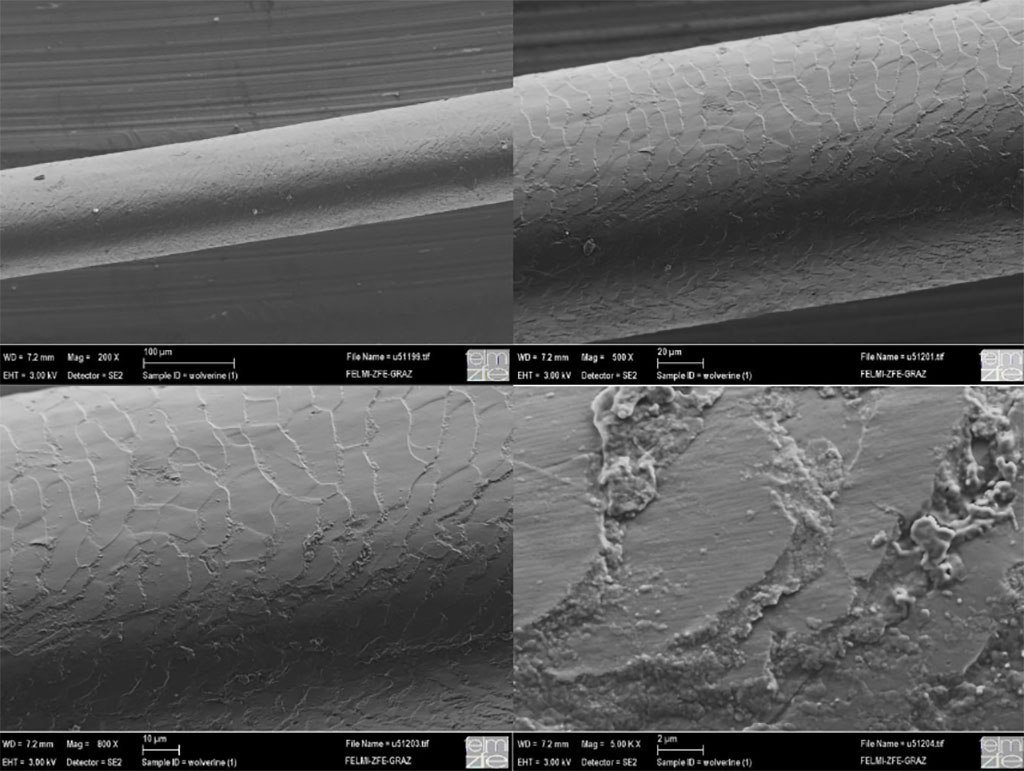
Sadly, there is still no clear understanding of why wolverine fur is so effective – or, to be precise, why it’s so easy to brush frost off before it becomes a problem. But it seems certain that when an answer is found, it won’t point to one factor alone.
One proposal is that wolverine guard hairs are uncommonly smooth, with no tiny barbs to stop frost from falling off. Using a scanning electron microscope, Pavlin confirmed that the middle parts of wolverine guard hairs are indeed smooth. The tips, however, showed a “very interesting pattern” of barbs.
He also tried freezing hair tips and testing for any abnormal surface electrical charge that might influence frost or ice formation, but found none (though he thought this should be revisited with optimal testing equipment). There were also no chemical substances on the hairs’ surface. And in one test which seems unrelated to the purpose of his research but may prove useful to someone, he found the tensile strength of wolverine hairs to be remarkable as he could stretch them by more than 20%! But no silver bullet to explain everything.
“Many different strategies contribute to easy frost removal,” he concluded, adding that “some questions remain unresolved and should be subject of further research.” But he did at least come up with one definitive finding, which he states cryptically as: “A non-hydrophobic surface is superior to other existing approaches – a proof that the most obvious solution doesn’t need to be the right one.” In short, while it might seem obvious that wolverine fur is hydrophobic, it’s not.
***
To learn more about donating to Truth About Fur, click here.











Some rather interesting stuff here-had never even thought much about that frost forming other that when iced up it makes me miserable! Going to have to look into a bit of wolverine fur now.